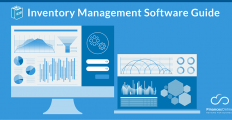A new version of this article, featuring the latest data and statistics, is available. Check out our report on Project Management Software Statistics for 2022.
Project management software constantly evolves with the emerging technologies and approaches to planning, budgeting, resourcing, data mining, time tracking, and delivering projects. For example, look at how organizations have ceased choosing either agile or Waterfall project management methodologies and instead take the best of both worlds for a hybrid approach, a development that not many would have foreseen just a few years ago. Actual business needs demanded that project managers take a different route, and the results of extensive project management software research among developers yielded what we see now being implemented by project management practitioners.
These are just a few examples. Here, we present the most pressing project management software statistics to keep you abreast of industry best practices without having to expend your own precious time and resources. Take a look at how the industry and the practice have been shaping up these past few years and into the next few ones with this collation of project management software data and statistics.

Essential Project Management Statistics Table of Contents
1. State of the Industry Statistics
Looking at the state of the project management software industry, what would strike most analysts is how it has taken off slowly relative to other business tools. This, despite the proven efficacy of these applications in solving project management problems, when implemented the right way. While many project managers in the past were justified to see project management software as way too complicated with steep learning curves, recent strides have largely addressed this, with most project management software dashboards now getting as intuitive and easier to use as other software categories. The figures below suggest how you could put project management software to good use in your own business.
- Organizations that use proven PM practices waste 28 times less money than their counterparts who do not have PM practices in place. (CIO, 2019)
- Only 46% of organizations place a high priority on a culture that values project management (PMI, 2020)
- 8 out of 10 project managers believe that project portfolio management is becoming a critical factor in influencing business success. (Axelos, 2019)
- However, 52% of respondents are somewhat or very dissatisfied with the current level of PM maturity in their organization, more than the 45% rating in 2016 (Wellingtone, 2020).
- Only 6% of organizations in Australia received more projects and worked on more programs during the COVID-19 pandemic (KPMG, 2020).
- In addition, 48% of organizations in Australia always or often report project benefit tracking variations (KPMG, 2019)
- 61% of projects have highly involved sponsors (KPMG, 2020).
- 40% of the project and program governance activities of organizations are considered very effective (KPMG, 2020).
Project Management Software Adoption
- Only 23% of organizations use a project management software (Wellingtone, 2020).
- The project management software market is expected to register a CAGR of 10.67% from 2020-2025. (Mordor Intelligence, 2020)
- Currently, the project management software market share is led by Jira at 36.57%, Microsoft Project at 19.78%, and Smartsheet at 5.17%. (Datanyze, 2021)44% of managers do not believe in the use of software in managing projects (Hive, 2020).
- 35% of project managers use MS Excel to build resource plans (Wellingtone, 2020).
- The percentage of organizations using spreadsheets to manage projects dropped from 66% in 2018 to 64% in 2019 (Digital.ai, 2020).
- Around 67% of projects of organizations that undervalue project management as an essential element for driving change result in failure (PMI, 2020)
- On average, 11.4% of investment is wasted due to poor project performance (PMI, 2020).
- 73% of businesses believe that reliability, ease of use, and ease of integration are the top three requirements to look for when investing in digital PM software, yet they believe that the solutions out there today do not have these three factors. (Hive, 2020)
- 66% of project professionals admitted that their decision to invest in project management software was supported by the organization (Hive, 2020).
Project Management as a Career
- 61% of organizations provide project management training while 47% have a clear career path for project professionals (PMI, 2020).
- An estimated 1,279,390 project management specialists and business operations specialists are employed in the United States (US Bureau of Labor Statistics, 2021).
- Project management Professional (PMP) certificate holders earn salaries that are 22% than those without PMP certification (PMI, 2020)
- As of January 2021, the average base pay for a project manager was $66,137 per year (Glassdoor, 2021).
- Approximately, there were 6% more organizations with a project management office (PMO) in 2020 (89%) than in 2019 (83%) (Wellingtone, 2020; Wellingtone, 2019).
- 74% of project professionals believe that more employees will work from home (Wellingtone, 2020).

2. Project Planning Statistics
Most projects live and die at the design and planning stage. Just the inability to make the most of project management big data could have you start with the wrong sourcing partners, undermining the success of your project early on. You could be using one methodology in one department, while the other departments use their own. These information silos will cost your business in the short and long run unless you begin to gather your teams and work your way to a standard methodology throughout the organization. A choice of dedicated software can also go a long way in this direction. There are project management solutions for developers and project management apps for small business, so get one that is designed for your case scenario.
- 54% do not have access to real-time project KPIs (Wellingtone, 2020).
- 60% of project managers report that they always apply a defined project methodology (Wellingtone, 2020).
- 39% of project teams are composed of 6-10 people; 30.5% have more than 10 people; another 30.5% are composed of 1-5 people (Girl’s Guide to Project Management, 2021).
- Also, 50% of organizations mostly or always baseline their project schedules (Wellingtone, 2020).
- 67% of organizations include project change management in their initiatives (KPMG, 2020).
- 72% of PMOs are projected to increase in scope and responsibilities, up from 61% in 2019 (Wellingtone, 2020).
- 53% of organizations that are considered project management technology innovators apply agile techniques (PMI, 2019)
- Project professionals manage 23% of the company’s initiatives by incorporating AI (PMI, 2020).
- The top agile methods employed by organizations are daily standup (85%), retrospectives (81%), sprint planning (79%), sprint review (77%), and short iterations (64%). (Digital.ai, 2020)
- 69% of project professionals state that their senior leaders value project management. (PMI, 2020)
- 67% of project managers believe that the complexity of programs and projects has increased over the past decade. (KPMG, 2020)
- Additionally, 84% of CEOs have accelerated the development of a next-generation operating model and the digitization of operations (KPMG, 2020).
- Surprisingly, 23% of projects do not undertake change management initiatives. However, of the projects that do, 32% deem them extremely effective (KPMG, 2020).
- 59% of organizations conduct independent project performance reviews (KPMG, 2020).
- 63% of organizations work on projects that incorporate change management capability (KPMG, 2019).
- Meanwhile, in Australia, 57% of organizations use a centralized PMO to streamline project activities (KPMG, 2020).
- 28% of organizations believe that the adoption of agile methods has improved their project success rates (KPMG, 2020).
- 51% of organizations require project professionals to have certification for their role (PMI, 2020).
- Organizations that are highly mature in project management capabilities outperformed those that aren’t, as they met their goals 77% of the time (PMI, 2020).
10 Biggest Challenges in Adopting Agile Project Management in 2020
The organization's resistance to change: 48
The organization's resistance to change
%Lack of leadership participation: 46
Lack of leadership participation
%Inconsistent practices and processes across teams: 45
Inconsistent practices and processes across teams
%Organizational culture doesn't align with agile values: 44
Organizational culture doesn't align with agile values
%Inadequate management support and sponsorship: 43
Inadequate management support and sponsorship
%Lack of skills or experience with agile practices: 41
Lack of skills or experience with agile practices
%Lack of training: 39
Lack of training
%Lack of business/customer/product owner availability: 36
Lack of business/customer/product owner availability
%Continued use of traditional methods: 30
Continued use of traditional methods
%Fragmented project-related data: 29
Fragmented project-related data
%Source: VersionOne 2020
Designed byMost Popular Project Management Software
- monday.com is an award-winning project management platform that provides a visual and collaborative space for teams to plan, organize, and track project progress. It has a simple and intuitive interface for an easier onboarding and faster adoption of your team. To know more of its full features, you can check out our monday.com review.
- Wrike is a cloud-based collaboration and project management software. It provides real-time reports and status updates on your projects. You can find out more about its features in our Wrike review.
- Smartsheet is a flexible project management software suited for organizations of all sizes. It has planning, automating, and reporting tools to give your team a more effective workflow. Know more about its features in our Smartsheet review.
- Asana allows you to track and manage all your projects on a single platform. It streamlines communication across your organization and lets you plan and set goals with your team. More details about its features can be found in our Asana review.
- Jira is perfect for developer teams for planning, tracking, and releasing a software. It lets you create a custom workflow that best suits your team. You can learn more about its tools in our Jira review.
3. Project Budget Statistics
One of the most prominent project failures, that of KMart’s colossal $1.2 billion IT modernization project, is a stark reminder for every business to keep a tight watch and control of project budgets. Take heed of how the best project management performers do it, something that you could also do with the help of the leading budget management tools out there.
- 91% of US CEOs believe that skill directly affects a company’s financial performance. (PMI, 2020)
- 43% of companies mostly or always accomplish projects within the budget. (Wellingtone, 2020)
- Meanwhile, 27% of projects go over budget. (Wellingtone, 2020)
- Failed IT projects cost the United States $50–$150 billion in lost revenue and productivity. (Axelos, 2019)
- Also, IT projects with budgets exceeding $1 million have a 50% higher failure rate than projects with budgets below $350,000. (Axelos, 2019)
- 24% of project professionals believe that projects are hampered by unrealistic budgets. (Axelos, 2019)
- 20% of project professionals believe that adopting agile techniques can lower project costs. (Axelos, 2019)
- 47% of project managers believe that they are expected to deliver more value with a reduced budget and timeline. (Axelos, 2019).
- Organizations with high maturity value delivery capability accomplish 67% of their projects within the allotted budget. On the other hand, organizations with low maturity value delivery capability do the same for only 46% of their projects (PMI, 2020).

4. Project Performance Statistics
Key factors to the best performing projects include well-trained professionals, the widespread adoption of PMOs, and doing your homework over project risk management. If your business finds it hard to implement effective training courses for your project managers, consider getting the help of outside professionals. If doing it in-house appeals more to you, consider investing in the most capable learning management systems instead.
- 77% of high-performing projects use project management software (Hive, 2020).
- 40% of projects mostly or always deliver their full benefits (Wellingtone, 2020).
- 35% of organizations are somewhat or very satisfied with their level of project management maturity (Wellingtone, 2020).
- About 60% always or mostly engage in risk management (Wellingtone, 2020).
- 29% of projects are mostly or always completed on time (Wellingtone, 2020).
- To improve performance, 68% of organizations emphasize developing leadership while 65% focus on developing the technical skills of their personnel (PMI, 2020).
- About 36% spend one or more days annually collating project reports (Wellingtone, 2020).
- 89% of organizations have one or more PMOs; 26% of these are less than two years old (Wellingtone, 2020).
- Interestingly, 54% of organizations do not have access to real-time KPIs (Wellingtone, 2020).
- The Scaled Agile Framework is the most popular scaling method with 35% of organizations applying it. (Digital.ai, 2020)
- Four in 10 project professionals believe that the projects they worked on are a complete success (Axelos, 2019).
- 59% of project managers run two to five projects, 15% work on one, 15% take on more than 10, and 11% do six to 10 (Girl’s Guide to Project Management, 2021).
- The top three benefits of agile project techniques include the ability to handle changing priorities (70%), project visibility (65%), and business/IT alignment (65%) (Digital.ai, 2020).
- Business value delivered (46%), customer satisfaction (45%), and velocity (37%) are the top three measures of individual agile project success (Digital.ai, 2020).
- Agile transformations have a success rate of 41% (Scrum, 2021).
- 47% of project managers believe that their companies have built a track record of project success (Wellingtone, 2020)
- 58% of organizations say that project success rates have improved over the last two years (KPMG, 2019).
- Approximately 51% of organizations deliver projects that meet the business objective or original goal. Meanwhile, 52% of organizations deliver projects that satisfy stakeholders (KPMG, 2020).
- In 2018, 35% of organizations in Australia completed more than 50 projects (KPMG, 2019).
- On average, organizations with high-value delivery maturity complete 63% of their projects on time (PMI, 2020).
Source: Wellingtone 2020
5. Project Failure Statistics
If project reworks, out-of-sync project teams and executives, and haphazard business objectives are taking their toll on your business projects, it’s time to rethink and overhaul your overall implementation of project management across your organization. Perhaps your project managers and executives hold conflicting KPIs from the start, or are not using the right time tracking software to manage how workers handle their time and individual tasks.
- If management takes five hours or longer to make decisions, the failure rate of agile projects is 22% while the likelihood of projects producing unsatisfactory results is 53% (Scrum, 2021).
- 58% of organizations admitted that the impact of COVID-19 has been moderate or significant, causing project delays and cancellations (KPMG, 2020).
- 25% of organizations sometimes or never create scoping documents for projects (Wellingtone, 2020).
- Organizations with low-value delivery maturity have a project failure rate of 21%, much higher than those of organizations with high-value delivery maturity, which have a failure rate of 11% (PMI, 2020)
- Organizations that do not leverage or have outdated project management technology have a project failure rate of 18% (PMI, 2019).
- The number of project professionals who believe that poor resource management is a significant problem in project management increased by 60% in 2019 (Wellingtone, 2019).
- A more recent report shows that 25% of organizations do not leverage technology suitable for team collaborations on informal projects despite this consuming 20% of their productive times at work (Wellingtone, 2020).
- The biggest challenges to adopting agile techniques to an organization are the resistance to change (48%), lack of leadership participation (46%), and inconsistent practices across teams (45%) (Digital.ai, 2020).
- Almost one in five project managers have thought of leaving their jobs (Girl’s Guide to Project Management, 2021).
- Organizations that have low maturity on project management technology lose the budget from failed projects 42% of the time (PMI, 2019).
- 54% of the projects of companies with low project management technology maturity go over budget (PMI, 2020).
- 47% of agile projects are late, have budget overruns, or result in unhappy customers (Scrum, 2021).
- Furthermore, 11% of agile projects fail outright and end up delivering nothing (Scrum, 2021).

6. Project Management Software Key Developments
The future belongs to AI, machine learning, and the Internet of Things. If you are not watching the latest project management statistics and developments, then don’t be surprised to see a startup or an old competition jump ahead of your business in the pecking order of customers. AI is encroaching on every facet of businesses and shows no sign of stopping soon. Businesses are accumulating big data left and right, and only the best artificial intelligence software could make any sense of them, for example.
- 56% of organizations have already developed a digital transformation strategy that incorporates AI (IPMA, 2020).
- Organizations believe that the main roles of AI would be as PM assistant (52%), PM advisor (42%), and PM substitute (3%) (IPMA, 2020).
- 54% of organizations leverage agile practices but are still maturing in that regard (Digital.ai, 2020).
- 75% of project professionals believe that the usage of collaboration tools for teams will increase (Wellingtone, 2020).
- When asked which factors are the most critical to achieving success in the future, 35% of executive leaders identified organizational agility as the top factor. (PMI, 2020)
- 32% of executive leaders believe that investing in the right technologies is the biggest factor in future success (PMI, 2020).
- 31% of executive leaders believe that learning relevant skills is the biggest factor in future success (PMI, 2020)
- As of 2020, 59% of organizations were using Microsoft Project Online compared to 57% in 2019 (Wellingtone, 2020; Wellingtone, 2019)
- Interestingly, of the organizations that have implemented project management solutions, more than 45% have received some, most, or all the intended benefits (Wellingtone, 2019).
- 22% of organizations used the appropriate resource management solution in 2020 (Wellingtone, 2020).
- 71% of project professionals believe that the perceived value of PMOs will increase, up from 55% in 2019 (Wellingtone, 2020).
- The top tools used for agile project management include Atlassian Jira (67%), Microsoft Excel (40%), Microsoft Azure DevOps (23%), Google Docs (19%), VersionOne (12%), and Microsoft Project (9%) (Digital.ai, 2020).
- 70% of companies prioritize the creation of a culture that focuses on delivering customer value (PMI, 2020).
Source: VersionOne 2020
Future-Proof Your Business with these Industry Insights
With your own business to mind and projects to attend to, use these critical project management software statistics to polish your project processes or, if you have been seeing drastic results from them, to commit sweeping changes completely. Project teams that use their own methodologies and go about with their own objectives hurt your ROI, and if your resources are limited, you might as well say goodbye to your business soon.
Knowing how to make project management software more efficient and getting it used by your key personnel should help you arrest some of the negative practices of your workers in the past. Many project management tools are specially designed to work with distributed groups, making it easy to share information and collaborate on tasks. You can even replace email communication with project management software to keep everyone in the loop. Moreover, many vendors allow you to test-drive their platform so you know whether it agrees with your own working patterns. Once you have decided on a specific solution, you can follow these 10 steps on how to successfully implement project management software.
References:
- Alexander, M. (2021, February 19). Project management guide: Tips, strategies, best practices. CIO
- Axelos (2019). The PPM Benchmarking Report 2019. Axelos
- Datanyze (2021). Project Management Market Share. Datanyze
- Digital.ai (2020, May 26). 14th Annual State of Agile Report. Digital.ai
- Glassdoor (2021, March 23). Project Manager Salaries. Glassdoor
- IPMA (2020, October). Artificial Intelligence impact in Project Management. IPMA
- KPMG (2020). Project Delivery Performance in Australia. KPMG
- KPMG (2019). The Future of Project Management: Global Outlook 2019. KPMG
- KPMG (2018). The State of Play in Project Management. KPMG
- Harrin, E. (2021, March 22). The 2021 Project Management Report. Girl’s Guide to Project Management
- Lim, R. (2020, October 9). 15 Fascinating Project Management Statistics. Hive
- Mordor Intelligence (2020, December). Project Management Software Market – Growth, Trends, Forecasts (2020 – 2025). Mordor Intelligence
- PMI (2020, January). PMI 2020 Signposts Report. PMI
- PMI (2019). Pulse of the Profession 2019 The Future of Work. PMI
- PMI (2020). Pulse of the Profession® 2020 Ahead of the Curve: Forging a FutureFocused Culture. PMI
- PMI (2020, January 21). Summary of ‘Earning Power: Project Management Salary—Eleventh Edition.’ PMI
- Scrum Inc. (2021, January 29). Why do 47% of Agile Transformations Fail? Scrum
- US Bureau of Labor Statistics (2019, May). Occupational Employment and Wages, May 2019. US Bureau of Labot Statistics
- Wellingtone (2019). The State of Project Management Annual Report 2019. Wellingtone
- Wellingtone (2020). THE STATE OF PROJECT MANAGEMENT 2020. Wellingtone




























Beneficial article indeed, I wonder whether 2020-2021 FY will turn out to be in favour of the project management-focused software technology, given C19 and its effects on remote working. Should less face-to-face interaction prove to accelerate the use of project management methods, or will this factor be a deterrent for relationship building?
James,
Very helpful and educative article which I will quote in my research on accountability in SME Project planning. Thank you
Andrew
Leave a comment!